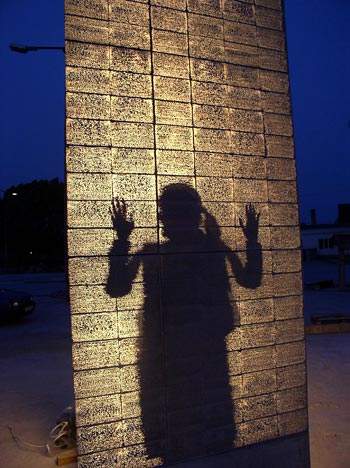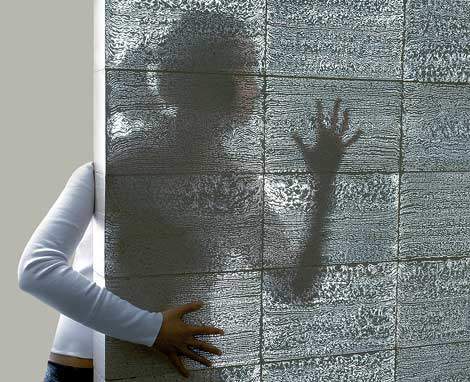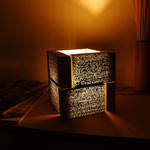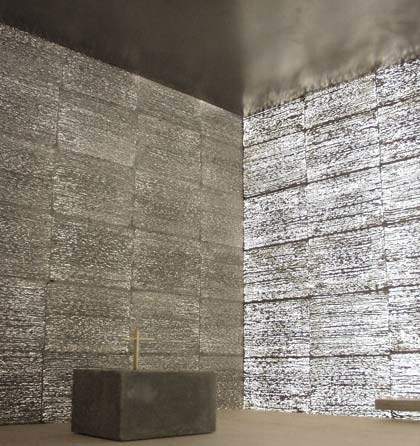Concrete is a building material made of a mixture of water, sand, pebbles and cement, often defined as artificial stone. A word considered to be of French origin, concrete is associated with engineering achievements – bridges, power plants, foundries.
Translucent stone
As this content has become more complex throughout history, the significance of making concrete transparent or translucent has increased.
Translucent stone is not only a transparent, compact building material, but also a tool of expression in the hands of artists and architects. Philosophical, visual and material signifiers are all incorporated.
Litracon™ presents the concept of light transmitting concrete in the form of a widely applicable new building material. It can be used for interior or exterior walls, illuminated pavements or even in art or design objects.
Optical fibres
Light transmitting concrete is a mixture of optical glass fibres and fine concrete. It can be used as prefabricated blocks or panels. Thousands of optical glass fibres form a matrix and run parallel to each other between the two main surfaces of every block.
The proportion of the fibres is small, at 4% of the total volume. Because of their size, they become a structural component in the concrete. The surface of the blocks therefore remains similar to homogeneous concrete.
The glass fibres lead light through the two sides of the concrete. Because of their parallel position the lighting on the brighter side of such a wall appears unchanged on the darker side. Shadows are displayed on the opposing side of the wall and the colour of the light remains the same.
Structural effects
In theory, a wall structure built out of Litracon can be a couple of metres thick. The fibres work with minimal loss of light up to 20m.
Load-bearing structures can also be built using these blocks, as glass fibres do not have a significant negative effect on the high compressive strength of concrete. The blocks can be produced in various sizes and also include embedded heat-isolation.







